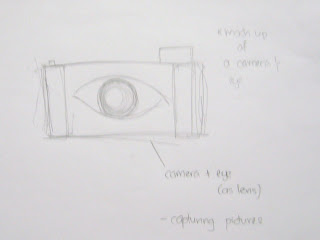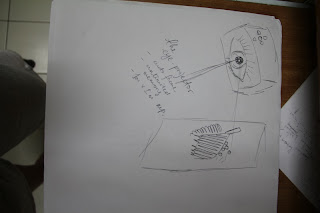Nowadays, many areas surrounding our daily lives are involved with creative multimedia; from educational to the entertainment industry. However, digital arts caught our attention and we would like to further explore the essence of digital arts in creative multimedia.
Photography was one of the very first digital arts. It is a process, activity and art of creating still or moving pictures by recording radiation on a radiation-sensitive medium, such as a photographic film or an electronic sensor. Photography is often used to capture a moment, to present expression from the picture to the viewer. As technology advances, digital photography is now widely used all over the world from commercial to non-commercial use. Some of the famous nature photographers like Frans Lanting and Galen Rowell captures nature events to portray an expression.
Yet, photography was not enough. Photo manipulation was invented, starting from retouching via ink, paint, double-exposure and darkroom manipulation. However as technology runs with photography, it goes the same with photo manipulation technology. This is the application of image editing techniques to photographs in order to create an illusion or deception, in contrast to mere enhancement or correction, through analog or digital means. One of the most popular photo manipulation software is Adobe Photoshop.
Photography is not only still frames, it also includes moving frames. Live-action is one of the moving frames photography. It refers to cinematography that is not produced using animation. However, it includes special effects (SFX) and visual effects (VFX). Special effects are on-set mechanical effects and in-camera optical effects, mostly done on the spot when the film is being shot. Green screens are used in this area of effects. Visual effects are digital post-production. Effects done here are usually those we cannot do physically in reality, for example blowing up a car in the middle of the city. All these effects are done with digital photography and technical skills.
From there, we go on to vector art, a 2-dimensional simplified and stylized image of the original. It is often used in posters, where vector enables it to be able to go through mass production with minimum cost and at the same time visually attractive. And with a little help from typography, the advertising industry began to expand with these digital arts.
After the 2-dimensional era was at its peak, 3-dimensional modeling appeared. Its accuracy in photorealism and flexibility in animation has brought digital art to a higher level. However, 2D still has its stand in the industry, no less than 3D. CAD programs are used to render a 3D model and animations in the form of mesh, whereas 2D in the form of bitmap and vector.
Animation started off with stop-motion. Puppet animation, clay animation, go motion and pixilation were all “cartoons” of those days. You may recognize names like Jan Svankmajer and even Tim Burton! Today, Walt Disney and Pixar Animation Studio, as well as Dreamworks, takes over the industry with 2D and 3D animation with examples of animations such as “Up” and “The Incredibles”. One can see how good the quality of the animations.
From what we can conclude from the studies and research we’ve made on creative multimedia and on digital media, we have come to a conclusion that creative multimedia captures and also re-captures moments and events in life through the invention of new technology. With the technology we currently have, we are able to keep memories by taking photographs, and we have seen how the camera has evolved throughout these years. It’s not only the camera that has advanced, other inventions have moved forward too. Today, we’re also able to make motion movies and the process is not as tedious as it used to be. In other sense, everything has been simplified and made easier for us mankind."
Thank you very much!










































